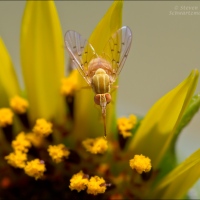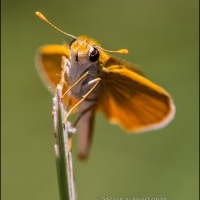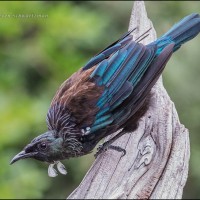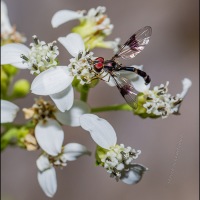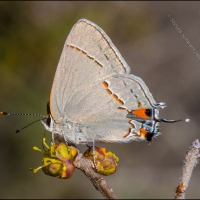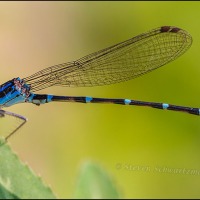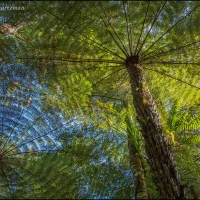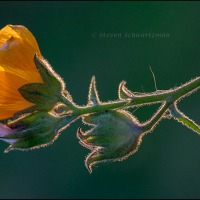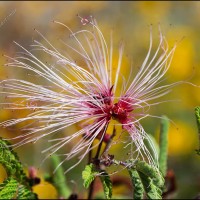Posts Tagged ‘Texas’
Two species of Monarda
On May 5th in Bastrop State Park two species of Monarda flourished. The top picture, taken not far inside the park’s entrance, shows the same horsemints we have in Austin, Monarda citriodora. The yellow flowers are Texas dandelions, Pyrrhopappus pauciflorus, and toward the right you see a couple of Texas thistle “powder puffs,” Cirsium texanum. Within sight of that colony I found a group of what appeared to be spotted beebalm, Monarda punctata, with plenty of black-eyed Susans, Rudbeckia hirta, intermingled.
§
§ § §
§
It’s not just the United States that’s going mad
To protect children from sexual exploitation, Canada must pass the Online Harms Act, says Prime Minister Justin Trudeau’s government. “I am the parent of two young boys,” said Justice Minister Arif Virani. “I will do whatever I can to ensure their digital world is as safe as the neighborhood we live in. Children are vulnerable online. They need to be protected from online sexual exploitation, hate, and cyberbullying.”
But Virani’s bill is totally unnecessary to protect children. Its real goal is to allow judges to sentence adults to prison for life for things they’ve said and for up to a year for crimes they haven’t committed but that the government fears they might commit in the future.
As such, Trudeau and Virani’s Online Harms Act (Bill C-63) is the most shocking of all the totalitarian, illiberal, and anti-Enlightenment pieces of legislation that have been introduced in the Western world in decades.
The Liberal government’s censorship legislation, when considered in the context of Trudeau’s sweeping abuse of governmental powers during and after the Covid pandemic and new subsidies for government propaganda, sets a new watermark in rising totalitarianism in Western societies.
You can read the rest of Stephen Moore’s alarming article. You can also watch a 12-minute video put out by the Canadian Constitution Foundation on the same subject.
© 2024 Steven Schwartzman
Purple amidst all the red and yellow
For some years now I’ve noticed mealy blue sage (Salvia farinacea) coming up each spring at the southwest corner of Burnet Rd. and Shoreline Dr. in far north Austin. On April 29th I stopped there to take advantage of the particularly dense colony of firewheels (Gaillardia pulachella) that had surrounded the sage.
§
§ § §
§
Public service announcement
You’ve probably heard from time to time about how scammers bilk people out of money. One scheme that’s been worked on older people is to contact them claiming to be a grandchild who’s in trouble and desperately needs money to get out of a jam. That gambit is likely to increase because with advances in artificial intelligence (AI), scammers can make fake videos and audios that look and sound just like the real person that the target of the scam knows.
As good citizens we should make people, especially older people, aware of that kind of scam. Even better, we should give them a defense. It occurred to me that anyone who gets contacted by somebody claiming to be a relative or friend in trouble should ask a question that only the real person would know the answer to. Examples are:
- Where did we vacation in 2005?
- What kind of pet did you have in junior high school and what was that pet’s name?
- What country did your mother’s mother immigrate from?
- You used to eat two foods together that everyone thought was a strange combination. What were they?
The more particular and unusual the question, the better. If the supposed relative or friend who’s in trouble doesn’t immediately answer or dodges and makes excuses for not being able to answer (“I’m so stressed out I can’t think straight”), that’s almost certainly evidence of fraud.
If you know someone you think might be vulnerable to that kind of scam, pass this advice along.
© 2024 Steven Schwartzman
International Fascination of Plants Day for 2024
As today is International Fascination of Plants Day, it’s appropriate to show some portraits of plants I made in Driftwood on April 8th while waiting for the full solar eclipse. The first is fragrant mimosa, Mimosa borealis, and the second is a Missouri foxtail cactus, Escobaria missouriensis.
The third photograph reveals the intricacy of a developing
standing cypress plant, Ipomopsis rubra, viewed from above.
The last portrait shows a scarlet hedgehog cactus, Echinocereus coccineus.
with one of those “redder than red” flowers nature sometimes offers up.
§
§ §
§
Last week I watched an interview in which a well-known author repeated an aphorism that he attributed to Voltaire: “Anyone who can make you believe absurdities can make you commit atrocities.” Curious, I did a little searching and turned up an investigation into the quotation that Walter Olson carried out in 2020. The aphorism appears to be an unknown someone’s pithy summary of what Voltaire wrote in his 1765 essay “Questions sur les miracles” (“Questions About Miracles”). Here’s the relevant French passage, followed by an English rendering:
Il y a eu des gens qui ont dit autrefois : Vous croyez des choses incompréhensibles, contradictoires, impossibles, parce que nous vous l’avons ordonné ; faites donc des choses injustes parce que nous vous l’ordonnons. Ces gens-là raisonnaient à merveille. Certainement qui est en droit de vous rendre absurde est en droit de vous rendre injuste. Si vous n’opposez point aux ordres de croire l’impossible l’intelligence que Dieu a mise dans votre esprit, vous ne devez point opposer aux ordres de malfaire la justice que Dieu a mise dans votre cœur.
In times gone by there were people who said: You believe things that are incomprehensible, contradictory, impossible, because we’ve ordered you to; therefore do unjust things because we order you to. Those people reasoned wonderfully well. Certainly anyone who’s entitled to get you to be absurd is entitled to get you to be unjust. If you don’t take the intelligence that God has put into your mind and use it to resist orders to believe the impossible, then you won’t take the sense of justice that God has put into your heart and use it to stand up against orders to do wrong.
© 2024 Steven Schwartzman
More from along Interstate 35 north of Austin
Here’s more from along Interstate 35 in Georgetown on April 29th. The top view shows Engelmann daisies (Engelmannia perestenia), firewheels (Gaillardia pulchella), and three “globes” of antelope horns milkweed (Asclepias asperula).
§
§ § §
§
Yesterday’s post included an excerpt from a 1947 hearing in the U.S. House of Representatives. The witness was Ayn Rand. Born Alissa Rosenbaum, she, like my father, grew up under the tyranny of the Soviet Union and managed to escape and come to the United States in the mid-1920s. Now fast forward a century from their arrival:
A young woman was filmed at a New York University anti-Israel protest over the weekend praising North Korea’s support for Palestinians and their “shared struggle” against oppressors — with the “deranged” and “deluded” viral clip sparking fierce backlash online.
The footage, which was shared on X by the @thestustustudio account and has already been viewed more than 2 million times — showed the unidentified woman giving an apparent “teach-in” Saturday about North Korea’s solidarity with Palestinians.
“They have always upheld the right of Palestinian people to self determination and resistance and this is beyond moral and rhetorical support,” said the woman, who the original poster identified as a student, of North Korea — which has been ruled by a ruthless dicatorship for decades.
That’s the beginning of a May 6th New York Post article, which you can read in full. The woman—who of course hid behind a mask—is so delusional that she thinks North Korea, the most repressive régime in the world today, is an exemplar of freedom and justice.
© 2024 Steven Schwartzman
Interstate 35
On April 29th, after I documented great wildflowers in the median of the Capital of Texas Highway that borders my Great Hills neighborhood, we headed out after lunch toward Georgetown, about 20 miles north of Austin. The main highway through there is Interstate 35, whose margins and embankments in some sections did justice to Texas’s wildflower season. One such place was the southwest quadrant of the intersection with Leander Rd., where Engelmann daisies (Engelmannia perestenia) punctuated a dense colony of firewheels (Gaillardia pulchella). In the same quadrant a Texas thistle (Cirsium texanum) towered over the firewheels; that picture gives you a better feel for how large and dense the firewheel colony was.
§
§ § §
§
Rep. John McDowell: … Don’t [Russians] do things at all like Americans? Don’t they walk across town to visit their mother-in-law or somebody?
Ayn Rand: Look, it is very hard to explain. It is almost impossible to convey to a free people what it is like to live in a totalitarian dictatorship. I can tell you a lot of details. I can never completely convince you, because you are free. It is in a way good that you can’t even conceive of what it is like. Certainly they have friends and mothers-in-law. They try to live a human life, but you understand it is totally inhuman. Try to imagine what it is like if you are in constant terror from morning till night and at night you are waiting for the doorbell to ring, where you are afraid of anything and everybody, living in a country where human life is nothing, less than nothing, and you know it. You don’t know who or when is going to do what to you because you may have friends who spy on you, where there is no law and any rights of any kind.…
That’s from a 1947 hearing in the U.S. House of Representatives. Just like my father, Ayn Rand grew up under the tyranny of the Soviet Union and managed to escape and come to the United States in the mid-1920s. Tomorrow we’ll jump ahead a century from their arrival.
© 2024 Steven Schwartzman
Barbara’s buttons
On April 29th I photographed not only in the median of the Capital of Texas Highway in my Great Hills neighborhood but also by the edge of the highway a couple of miles southwest. One subject was a little colony of Barbara’s buttons, Marshallia caespitosa. The top picture shows you I wasn’t the only visitor. Below, you get a better view of one of the flower heads in its own right.
§
§ § §
§
Today, Western societies continue to torture themselves over their histories of colonialism and imperialism, while allowing antisemitic, genocidal thugs and their apologists free rein on our streets, barely 80 years after the Holocaust. The disciples of bin Laden smile as Gen Z TikTokkers idiotically praise his evil rantings. The woke revolutionaries who have infiltrated our institutions seek to tear down the civilizing work of centuries.
Unless October 7 is the beginning of a reversal of Europe’s and America’s creeping cultural suicide, Islamism will prevail. We must sound the alarm, restating the Judeo-Christian values that have benefited us all so much. We must be loud in speaking up against the wrongheadedness of the go-along-to-get-along policies of our elites, and elect leaders who understand the West’s existential crisis and are willing to address it. We must champion our Western civilizational heritage and show Gen Z that the world built up over centuries by Western values is infinitely superior to the hellish dystopian vision of the Islamists.
In short, we must fight for our values wholeheartedly and unashamedly. Only then might we save the West. I have seen the alternative: I have lived in that Islamist dystopia. The wonderful cultures I found in 1992, which have immeasurably improved my life, are vanishing before our very eyes as our society’s terrible mistakes lead us to the Islamist precipice. Let October 7 be a spur to us to act before it is too late.
That’s the ending of a cautionary speech that Ayaan Hirsi Ali gave in December 2023, which I encourage you to read from the beginning. Unfortunately things have gotten worse since then.
© 2024 Steven Schwartzman
More from close to home
From the median of the Capital of Texas Highway that borders my Great Hills neighborhood, here are more pictures of the wildflower extravaganza I documented there on April 29th. The yellow-fringed red flower heads are Indian blankets (Gaillardia pulchella). The yellow flowers are Engelmann daisies (Engelmannia perstenia) and the brown ones are Mexican hats (Ratibida columnifera). A few violet-colored silverleaf nighshade flowers (Solanum elaeagnifolium) were mixed in. Nearby, old plainsman (Hymenopappus scabiosaeus) stood out and some greenthreads (yellow, Thelesperma filifolium) joined the mix.
§
§ § §
§
Migrants [i.e. people who entered the United States illegally] in Denver on Monday submitted a list of 13 demands that they say the city must meet before they leave their packed encampment and head into shelters. The group refused to budge until their extensive list… is met….
That’s from a May 9th article by Alec Gearty in the New York Post. The article lists the 13 demands:
- Migrants will cook their own food with fresh, culturally appropriate ingredients provided by the City instead of premade meals — rice, chicken, flour, oil, butter, tomatoes, onions, etc. … Also people will not be punished for bringing in & eating outside food.
- Shower access will be available without time limits & can be accessed whenever — we are not in the military, we’re civilians.
- Medical professional visits will happen regularly & referrals/connections for specialty care will be made as needed.
- All will receive the same housing support that has been offered to others. They cannot kick people out in 30 days without something stable established.
- There needs to be a clear, just process before exiting someone for any reason — including verbal, written & final warnings.
- All shelter residents will receive connection to employment support, including work permit applications for those who qualify.
- Consultations for each person/family with a free immigration lawyer must be arranged to discuss/progress their cases, & then the City will provide on-going legal support in the form of immigration document clinics & including transportation to relevant court dates.
- The City will provide privacy for families/individuals within the shelter.
- No more verbal or physical or mental abuse will be permitted from the staff, including no sheriff sleeping inside & monitoring 24/7 — we are not criminals & won’t be treated as such.
- Transportation for all children to & from their schools will be provided until they finish in 3 weeks.
- No separating families, regardless of if family members have children or not. The camp will stay together.
- The City must schedule a meeting with the Mayor & those directly involved in running the Newcomer program ASAP to discuss further improvements & ways to support migrants.
- The City must provide all residents with a document signed by a City official in English & Spanish with all of these demands that includes a number to call to report mistreatment.
Like I said, chutzpah.
© 2024 Steven Schwartzman
Much closer to home
After 8 hours and 250 miles of wildflower hunting west of Austin on April 23rd, I lay low for almost a week. Not till the 29th did I head out with my camera again, initially “only” to a part of the Capital of Texas Highway that borders my Great Hills neighborhood. I put “only” in quotes because the highway median was actually quite a floral extravaganza, as you see here.
The yellow-fringed red flower heads are Indian blankets (Gaillardia pulchella). The prominent purple flowers are silverleaf nighshade (Solanum elaeagnifolium). You see them in the distance in the top picture, and a group of them closer below. A few Mexican hats (brown, Ratibida columnifera) are mixed in.

§
§ § §
§
You have to watch/read the moving speech “What It Means to Choose Life” that Douglas Murray gave when he accepted the Manhattan Institute’s Alexander Hamilton Award on May 6th. You’ll find out some of the things he experienced in Israel beginning right after Hamas’s slaughter of innocents seven months earlier.
© 2024 Steven Schwartzman
Dense Texas thistle colony
From April 22nd at the Wildhorse Ranch subdivision in Manor,
how about this dense colony of Texas thistles (Cirsium texanum)?
§
§ § §
§
The Oversight Board of Meta, the parent company of Facebook, is reviewing whether Facebook should keep letting users post slogans like “From the river to the sea, Palestine shall be free,” which have proliferated since October 7, 2023, after Hamas slaughtered 1200 people in Israel, torturing and raping many of them in the process, and continuing the mayhem by taking over a hundred hostages. In deciding whether Facebook should still allow such slogans or should ban them, the Oversight Board is soliciting public comments through May 21st. You can follow that link to submit a comment if you’d like.
A friend alerted me to this yesterday, and here’s the comment I left:
Many people repeating the chant “From the river to the sea, Palestine shall be free” have no idea what river and what sea they’re chanting about, nor what the implications of the chant are. The river is the Jordan, and the sea is the Mediterranean. The slogan means that Palestine will be free of Jews everywhere between those two bodies of water, which is to say everywhere that the modern state of Israel exists. Whether the Jews who live there now are to be “merely” expelled or outright murdered, the chant doesn’t specify. Either way, the fulfillment of the slogan entails committing millions of individual crimes.
Facebook has three choices. One is to do nothing and let users keep posting the slogan. That perpetuates the call for the expulsion or killing of the people in a sovereign nation, and is therefore not a just course of action.
A second option is to ban the slogan and all variants of it. That eliminates the particular call for the expulsion or killing of the people in a sovereign nation, but it comes at the expense of Facebook users’ desire to express themselves.
A third choice, and the one I recommend, is that whenever a user cites slogans like “From the river to the sea, Palestine shall be free,” Facebook should attach an explanation containing the substance of what I said in my opening paragraph. That way everyone who reads a post containing those slogans will know specifically what’s being called for: the commission of millions of crimes by expelling or killing the people in a nation. In order to do something about such a dangerous threat, we have to know that the threat is being made and who is making it.
© 2024 Steven Schwartzman
Details amidst profusion
On our 250-mile circuit west of Austin on April 23rd I devoted most of my photographic time to the broad displays of wildflowers by the thousands. You’d most likely have done the same. Even so, I managed to squeeze in a few closeups, like the prickly pear cactus flower above and the base of a yucca below.
§
§ § §
§
Many developing nations never shared the Western elite’s obsession with reducing emissions. Life for most people on earth is still a battle against poverty, hunger and disease. Corruption, lack of jobs and poor education hamper their futures. Tackling global temperatures a century out has never ranked high among the priorities of developing countries’ voters—and without their cooperation, the project is doomed….
Beijing talks a good game about climate change, but China’s economic growth has relied on burning ever more coal. China is the world’s pre-eminent greenhouse-gas emitter and produced the largest increase of any nation last year. Renewables made up 40% of China’s primary energy in 1971. By 2011 they had fallen to about 7%, as coal use increased. Renewables have since inched up to 10%. Strong climate action could cost China nearly a trillion dollars annually. No wonder Beijing is dragging its feet.
This dynamic means that most of the world, particularly India and much of Africa, will continue to focus on becoming richer through fossil fuels. Russia and its allies will ignore the West’s fixation on climate change. China will simply make money from selling the West solar panels and electric cars while only modestly curbing its emissions. As rich countries attempt to export the cost of climate policy to poor countries through carbon-adjustment taxes, they will further drive a wedge into an already fractured world.
That’s from Bjørn Lomborg’s May 8th editorial in The Wall Street Journal titled “When the Only Problem Was Climate Change,” with subtitle “After the Cold War, the West took a vacation from history. Now it’s urgent that we get back to work.” You can click to read the full editorial.
© 2024 Steven Schwartzman


















